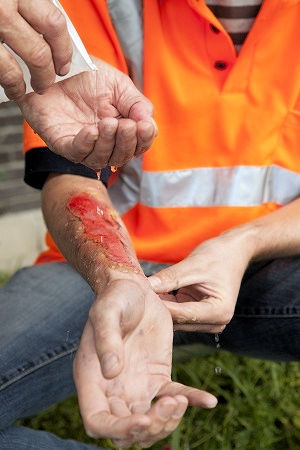Wounds
A wound is another problem that could be the result of an electrical shock. Welders could accidentally suffer an electrical shock, which could cause a loss of balance. Electric shock could result in a minor or severe injury. Because workplace injuries can occur, you should know the basics of first aid.
Wounds are classified according to their general condition, size, location, how the skin or tissue is broken, and the agent that caused the wound.
Burns
The causes of burns are generally classified as thermal, electrical, chemical, or radiation. Whatever the reason, shock always results if the burns are extensive. The four types of common burns experienced by welders include:
- Thermal burns: Exposure to intense heat, such as that generated by fire, bomb flash, sunlight, hot liquids, hot solids, and hot gases, cause thermal burns. Their care depends upon the severity of the burn and the percentage of the body area involved.
- Electrical burns: Electric current passing through tissues or the superficial wound caused by electrical flash causes electrical burns. They may be much more severe than they first appear. The entrance wound may be small, but as electricity penetrates the skin, it burns a large area below the surface. Usually, there are two external burn areas: one where the current enters the body and another where it leaves.
- Chemical burns: Chemical burns are generally not caused by heat, but by the direct chemical destruction of body tissues. When acids, alkalis, or other chemicals come in contact with the skin or other body membranes, they can cause injuries generally referred to as chemical burns. The extremities, mouth, and eyes are the areas that are most often affected. Alkali burns are usually more serious than acid burns because they penetrate longer.
- Radiation burns: Radiation (flash) burns are the result of prolonged eye exposure to ultraviolet light from the welder's torch. They account for about 6% of all construction eye injuries. The proper use of eye protection is necessary to prevent flash burns.
Knowledge Check Choose the best answer for the question.
2-7. Which of the following types of burns are due to exposure to ultraviolet light?
You forgot to answer the question!

